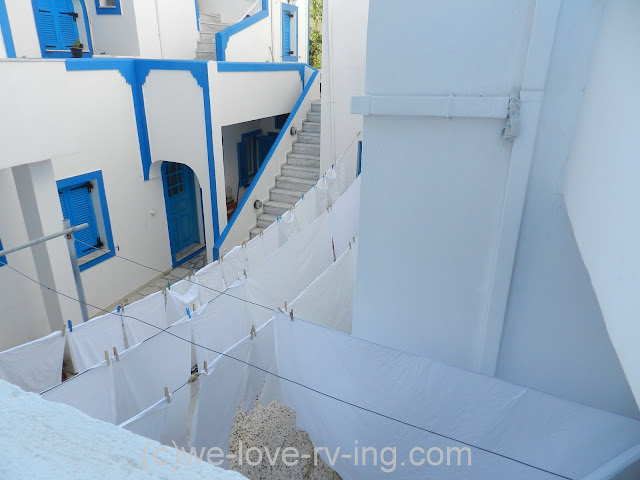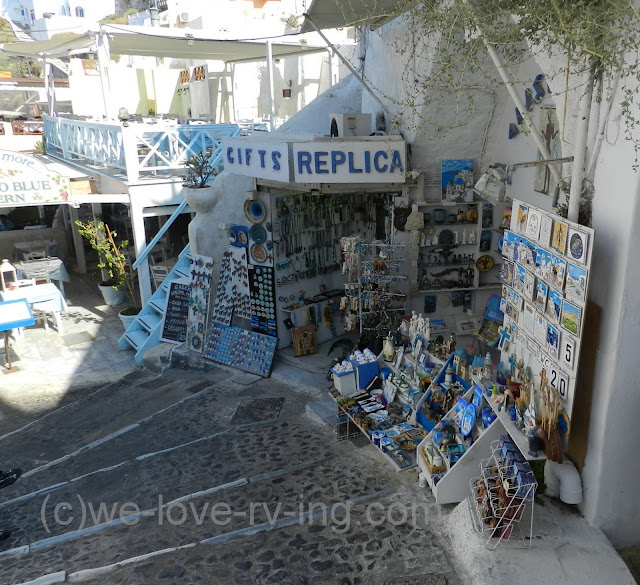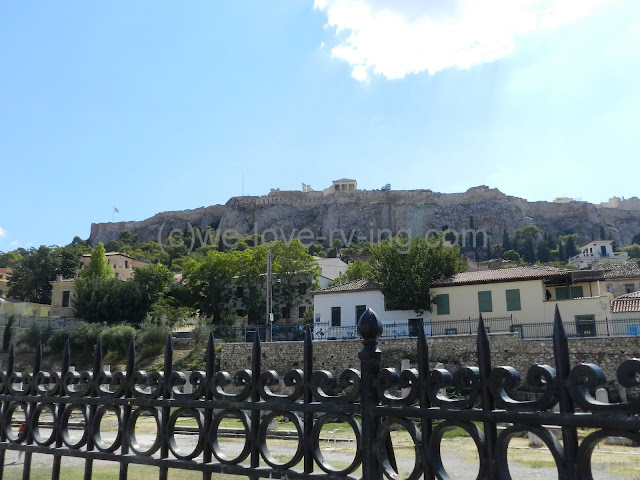Pension George in Karterados on the island of Santorini welcomes us.
 |
| Pension George in Karterados, Santorini, Greece |
Our stay in Santorini was to be over a week and we were looking for a nice hotel to be comfortable in. Our friends suggested a place they’d stayed at during their visit fifteen years ago. We found the webpage and Pension George was still in business so we began the booking process. It was easy, so reasonably priced and their response to our email was immediate.
 |
| Entrance to the top level of Pension George |
Pension George is in Karterados, which is a good 15 minute walk from Fira, the main town in Santorini. There is bus service on the main road, a ten minute walk away, which we used if we were going a farther distance than Fira but we did get plenty of daily exercise. There are lots of quads and scooters for rent which are a popular mode of transportation on the island.
 |
| Pension George pool in Karterados |
There was a sparkling blue pool right outside our door that was cleaned every morning although we didn’t see a lot of swimmers in there. Our room was right in the corner behind the fragrant bushes and offered us privacy plus a view of the pool and flowers right outside our patio.
 |
| View of the quiet pool |
We did see some visitors laying on the lounge chairs doing some afternoon reading in the sun at times. A great place to have some relaxation on this sunny island in Greece .
 |
| Laundry dries outdoors at Pension George |
Speaking of clean, this is a rare sight anywhere these days, let alone at a hotel. The crisp white towels and bedding are hung outside to dry.
 |
| Room with a view at Pension George |
George, the owner met us at the airport and delivered us and our bags to our room after a short drive. They had a welcome basket for us and a comfortable room to stay in that even had some flowers and towel sculptures decorating our bed when we arrived.
 |
| Poolside patio in Pension George |
We had our own private patio with lots of privacy from the pool, where we would sit at the end of our day and talk about the great places we had visited. We even had a friendly local cat have a few visits with us curled up on my lap, which I enjoyed but it did make me miss our pets Tango and Maggie back home.
 |
| Outdoor dining lounge at Pension George |
We found a few small eating places right in Karterado where we enjoyed having our dinners at. They were all within a few minutes walk from Pension George and served delicious food that was also very reasonably priced. This photo is the entrance patio at Pension George after dark which is also used for breakfast sittings and welcomed us when we arrived after dinner.
Sometimes a webpage can be deceiving when one is online shopping but that wasn’t the case for Pension George, (click here for their webpage). This is an immaculate small hotel, called a pension in Greece that offers breakfast and with added peace and quiet at its best. I would highly recommend a visit to see George and his wife Helen, they are wonderful hosts for your visit to Santorini , Greece









































